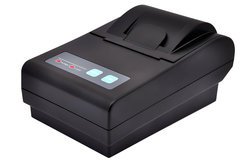 Businesses across many different sectors are increasingly turning to thermal printers for their printing needs. Companies are always looking for unique ways to reduce costs and increase productivity, and thermal printing manufacturers have aligned their value proposition with these goals, resulting in rapid sales growth that is forecasted to continue for many years.
Businesses across many different sectors are increasingly turning to thermal printers for their printing needs. Companies are always looking for unique ways to reduce costs and increase productivity, and thermal printing manufacturers have aligned their value proposition with these goals, resulting in rapid sales growth that is forecasted to continue for many years.
While managers, particularly in retail and manufacturing businesses, are delighted with the benefits of thermal printers, they are finding that change always results in a period of adjustment. Many companies have employed in-house IT specialists for years, most of whom specialize in repairing the traditional inkjet and laser printers that have long served as the standard. The specialists may be unfamiliar with thermal printing technology and thermal printer repair, leaving the company to scramble (usually at the worst possible time) when repairs are needed.
Advantages and Disadvantages of Thermal Printers
Thermal printers are often coveted for their unique combination of cost-effectiveness and speed. Clients are typically impressed by the fact that simply changing to a new printing system can allow them to reduce capital costs and save money via increased process productivity simultaneously. Most thermal printers come with a gentle learning curve that allows end-users to master the process quickly, and thermal printers can be used for a wide variety of applications such as tags, labels, tickets, and point-of-sale printing.
However, while the quality produced by thermal printers is usually high, color images don’t appear as vibrant as they do on traditional printer models. Also, while the high speed of the printing process itself is one of the format’s major selling points, it is offset somewhat with longer drying times for ink, as well as the fact that thermal printed images don’t survive during long exposures to direct sunlight.
Most Common Technical Problems
On the whole, thermal printers are low-maintenance devices that can operate well in a variety of conditions. Problems are likely to still arise, however, and we’ve yet to cross the hurdle of end-users being much more familiar with traditional printer troubleshooting than they are with newer thermal printer technology.
Typically, thermal printer users will experience difficulties relating to dirt collecting in the printer or ribbon due to the significant amount of dust that is produced during the printing process. Also, the printing speed can have a drastic effect on the quality of the image, and it’s important that the temperature of the print head and the print speed are correctly balanced in order for the image to transfer properly.
Achieving the Optimal Thermal Printer Benefits
Manufacturing, retail, and other types of businesses forecast revenue and profit on a strict analysis of the production and shipping schedules. When a technical issue causes a delay in barcode and label printing, the entire manufacturing chain becomes backlogged the bottom line suffers as a result.
Contracting with a managed print services company that specializes in thermal printing equipment repair, as well as ink refills, is a great way to experience all the benefits of your thermal printer.



